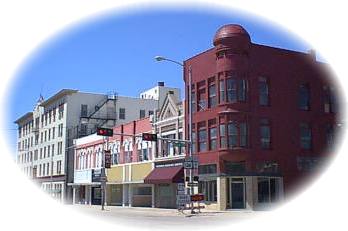
The Chautauqua, which operated annual summer assemblies from 1889 until the 1920's, based on high moral standards and offered secular and religious education., enlightened countless rural and small town residents of Nebraska. The Chautauqua sessions featured performances, discussions, lectures, and oratory as well as lessons in fine art and domestic science.
The 1889 pavilion is an impressive rectangular structure, and it is an engineering and architectural achievement of merit. The pavilion was originally open on all sides, but about 1915 the gabled section of the roof was extended on the east, and frame walls were built to serve as the extension's support.
The original Tabernacle, first used in 1889 is still standing and is still used for Homestead Days and family reunions. It is listed on the National Register of Historic Places.
